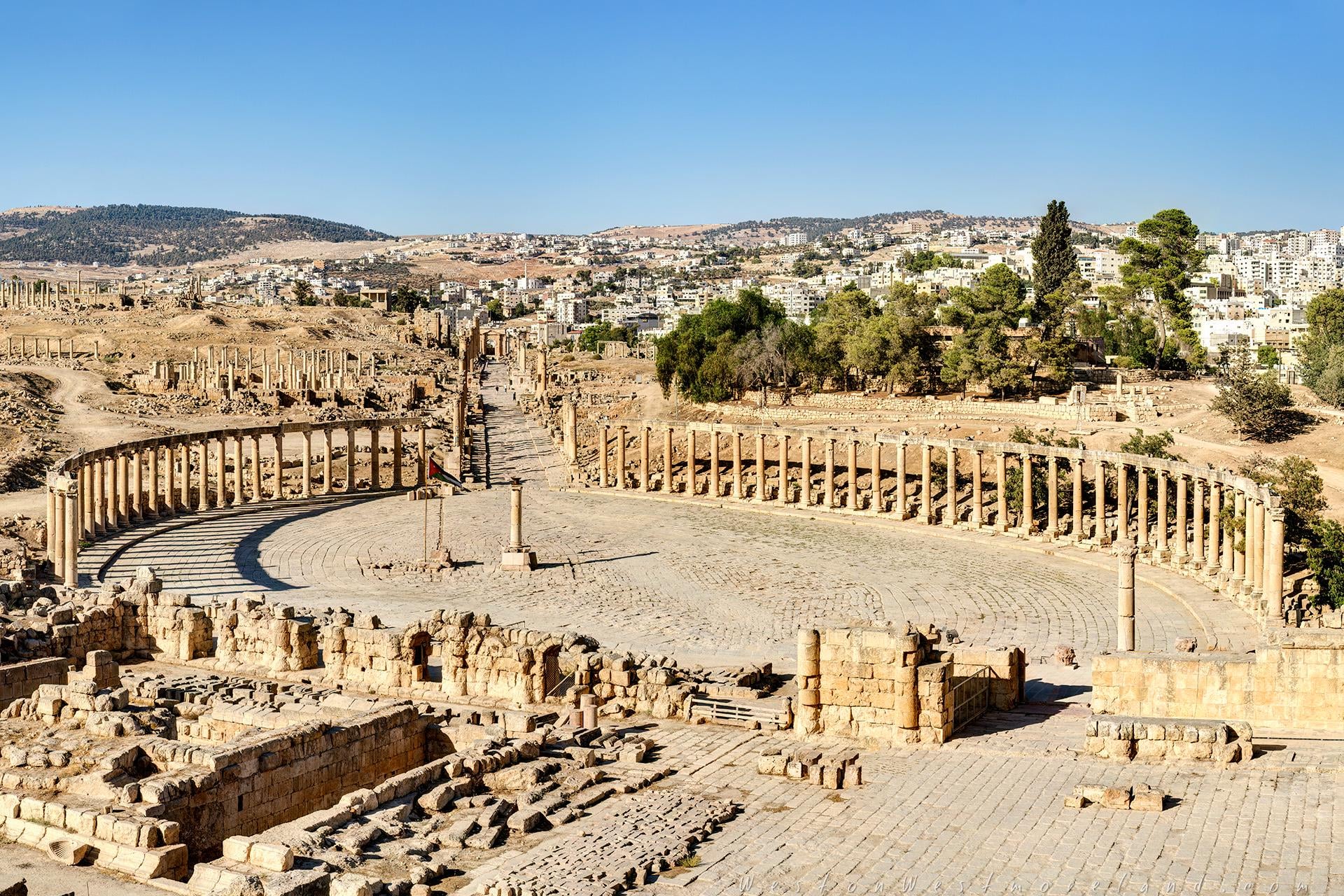
Oval Forum of Jerasa seen from the Temple of Zeus-Jupiter, c. 130 AD. Jerash, Jordan. When the new Cardo was laid out as the city’s north-south connection and main street, the incorporation of the central Sanctuary of Zeus was not possible through a frontal approach… [1920×1280] [OC]
by WestonWestmoreland

2 Comments
…because of the river valley and the rules of Roman urban planning with a rectangular street network.
The architectural solution was this elongated, elliptical plaza (approx. 90 x 80 yards), whose elegantly curved colonnades place the Sanctuary of Zeus as the dominant feature in the center. The paving of the square with large stone slabs was adapted to the curves of the colonnades.
The east colonnade led directly to the staircase of the temenos (a piece of land designated as separate from the common domain and dedicated to a god, which gave access to the temple from which the picture was taken at the bottom right). Behind the colonnades of the square there were probably stores.
There was probably an arch at the transition of the plaza to the Cardo. At the very back of the Cardo you can see the north tetrapylon, 580 yards away. That is the crossing point of the northern decumanus. The gates that can be seen inside the arch do not belong to the Tetrapylon, they belong to the north gate, some 3250 yards further behind it.
The construction of the Oval Plaza, built during the reign of Hadrian, was exceedingly difficult because it lies over a deep depression in the ground between the so-called Camp Hill and the hill of the Sanctuary of Zeus, which had to be leveled. During excavations in the early 1930s, archaeologists found a 6 to 8 m high substructure of large hewn and regularly walled stone blocks on a layer of hard gravel.
Jerash is the site of the ruins of the Greek city of Gerasa, also referred to as Antioch on the Golden River. The Roman Empire conquered the area in 63 BC. In the second half of the 1st century AD, the city of Gerasa achieved great prosperity. In AD 106, Gerasa was absorbed into the Roman province of Arabia, which included the cities of Philadelphia (modern day Amman), Petra and Bostra. Pompey attached the city to the Decapolis, a league of Hellenistic cities with considerable autonomy under Roman protection. The Romans ensured security and peace in this area, which enabled its people to devote their efforts and time to economic development and encouraged civic building activity. Emperor Trajan constructed roads throughout the province, and more trade came to Jerash. Emperor Hadrian visited Gerasa in AD 129–130, and the triumphal arch known as the Arch of Hadrian was built to celebrate this occasion.
My apologies for inaccuracies and mistakes.
St Peters square in Rome vibes